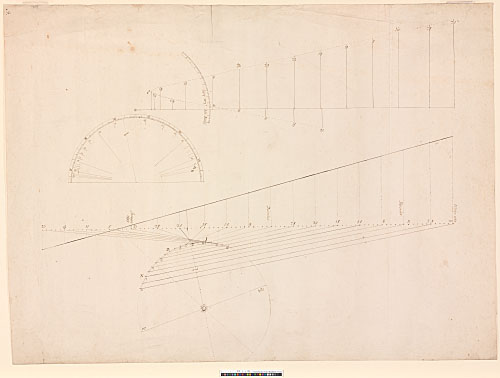391 - AS I.3. Diagram of the 1664 comet, drawn by Wren. Brown ink over pencil. 486 x 660 mm. Watermark: Strasbourg lily WR; IHS surmounted by a cross, in turn surmounted by a coronet (the countermark is similar to Heawood 1789). Inscriptions: Lat: Austr., Lat: Boreal:, January 1655 [sic], December, November, October 1664. Pricked through. Endorsed in pencil by an early hand: De Cometa.
Note to 391: This drawing illustrates the course of the 1664 comet between 20 October 1664 and 20 January 1665. Its position in space was calculated according to a geometric construction predicated on the Keplerian theory that comets moved in straight lines, and that their position in space could be calculated from four points of observation, thereby evading the problem of parallax. Wren presented 'some observations of the comet, with a theory' to the Royal Society on 1 February 1665 (Bennett 1982, 66). Following the appearance of a second comet in March 1665, he requested the return of his diagram. A copy was made by Hooke, and the original drawing was retained by Wren. It was subsequently published by Hooke.
[WS 12.24 and pl. 47; Summerson 1953, 53–54; Bennett 1982, 65–67; Downes 1982b, 42, 48, 49; Jardine 2002, 269–74]
